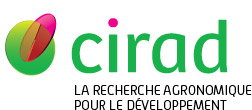Chéron-Bessou Cécile. 2023. Consultancy on coffee carbon footprint advices to the enveritas study. Montpellier : CIRAD, 45 p.
|
Version publiée
- Anglais
Utilisation soumise à autorisation de l'auteur ou du Cirad. 2023.4_CIRAD_USAID_V2.1_FINAL.pdf Télécharger (2MB) | Prévisualisation |
Résumé : This report compiles comments and recommendations provided along the study on carbon footprint of robusta coffee carried out by Enveritas and co-funded by USAID Green Invest Asia and partners (March 2022-April 2023). Comments were made at several occasions, including short technical meetings with mostly Enveritas, panel presentations to all partners or unilateral exchanges with the main commissioners, comments on documentation, etc. Key messages and recommendations are covered in this report. Together with all involved partners, Enveritas conducted robust and exhaustive surveys to characterise the practices and performances of coffee producers from both origins, Vietnam-Central Highlands and Indonesia-Sumatra. Enveritas established a sound sampling strategy and were transparent regarding the proposed method and its limitations, attempts to anticipate barriers and the ways data were handled. The completeness of the collected datasets is remarkable given the number of individuals concerned (2,556 in Vietnam, 2,023 in Indonesia) as well as the number of variables needed to implemented the Cool Farm Tool (CFT), which goes beyond the unique carbon footprint indicator. Enveritas were attentive to partners' comments and reactive to recommendations, although they might not have deviated enough from their initial plans – especially regarding the modelling of the perennial crop cycle. Enveritas carried out the carbon footprints with CFT, which ensured some robustness and consistency in the calculations. Results indicated averaged farm-level emissions of 1.83 kg CO 2eq per kg green bean equivalent (GBE) produced in Vietnam-Central Highlands and 2.38 kg CO 2eq per kg GBE produced in Indonesia-Sumatra. Those results are within the low range of carbon footprints published in the literature. Land use change did not play a critical role in the footprints across the studied systems but data on land use history was scarce and a refined analysis would be needed, especially given the discrepancy with land use change impact calculated with the Blonk tool/FAO datasets. As expected, fertiliser-related emissions, both up- and down-stream were the main impact contributors. Besides the carbon footprints, Enveritas analysed collected data to provide quantified information on carbon storage in the stands, according to diverse tree associations; which would be useful to fine-tuned the localised land use change balance once detailed historical data on land cover change becomes available. Overall the data was well presented and analysed. There are, however, some bottlenecks to be addressed. First, it would be recommended to follow ISO 14,067 on carbon footprint regarding the transparency on modelling assumptions and study presentation. Among others, details on the system boundaries, allocation choices and sensitivity analysis, as well as a proper data quality appraisal would be needed. A comprehensive and systemic description of the carbon footprint is unavoidable to decipher discrepancies across study results as presented in the comparative section (6.8). Second, for the purpose of connecting the carbon footprints with room for improvement in practices, a more agronomical approach would be paramount: i.e. modelling the whole perennial cycle, analysing the soil and climate context and constraints, investigating practices per fertiliser type and within given system constraints, etc. Third, despite the large surveyed samples, datasets were not representative of the whole sector in each origin (e.g. 0.5% of the total coffee production area of Central Highlands was surveyed in Vietnam). Conclusions from the sample cannot be extrapolated. A proper archetype analysis, based on an agronomic typology and site-specific socio-economic drivers, would be necessary to propose a conceptual framework and extrapolate the sample results. In order to streamline a continuous monitoring and reporting on coffee carbon footprint, it would be first necessary to consolidate and harmonise the numerous datasets collected from various previous studies. Then, some demo coffee farms could be selected for a continuous online reporting, ideally based on an agronomic typology of farming systems. More extensive surveys could be then conducted on a regular basis (e.g. every 10 years) to check the validity and representativity of the farm typology against potential technology advances or other socio-economic factors.
Mots-clés libres : Coffee, Carbon footprint
Agences de financement hors UE : United States Agency for International Development
Auteurs et affiliations
-
Chéron-Bessou Cécile, CIRAD-PERSYST-UMR ABSys (AUS)
 ORCID: 0000-0001-6686-8468
ORCID: 0000-0001-6686-8468
Source : Cirad-Agritrop (https://agritrop.cirad.fr/612710/)
[ Page générée et mise en cache le 2025-06-11 ]




